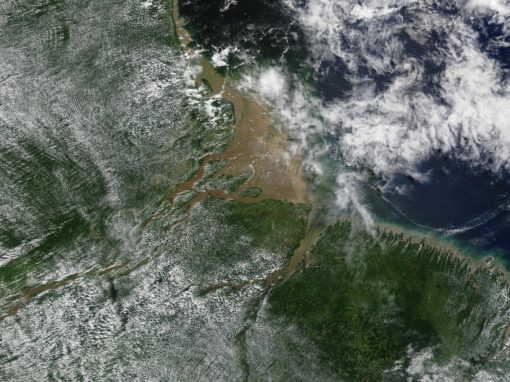The principle of Biotic Pump was not mentioned in this somewhat stale news item / research study out of Australia from 2013.
Not un-relevant to this year’s mega-fires Down Under.
(Note that this research center was shut down a couple years ago.)
UWA researchers find correlation between land clearing and rainfall reduction
A team of water experts has identified a correlation between widespread land clearing and a decline in rainfall in Western Australia’s South West region.
Researchers from the Centre for Water Research at the University of Western Australia say there is evidence that extensive clearing, which saw 50 per cent of the South West’s native forests cleared in the 1960s to 1980s, caused a 16 per cent reduction in rainfall.
Honorary Research Fellow Mark Andrich says the findings have prompted calls for urgent reforestation.
“Around half of the rainfall decline, at least up until the year 2000, is a result of land clearing,” he said. .
“By implication it means that if we plant more trees or have more reforestation then there’s a likelihood that rainfall could return.”
He says re-planting native trees would mitigate climate change but it will take some time before it has any impact on rainfall.
“This would involve growing tall native trees including Jarrah and Karri on vacant coastal land, as well as strategically growing native trees in and around farms,” he said.
“To see any effects you’d be looking at probably around at least a 20 to 30 year time frame so it’s really a long-term planning and infrastructure decision.
“But it’s something that also individuals can assist with on their own vacant land or on farms and unproductive land.
“With global climate change we’ve been blaming other countries for producing most of the CO2 but this is something that we’ve caused locally to a large extent and there for something we can do something about to a large extent as well.”
Centre for Water Research director and co-author Jorg Imberger says the findings should be a wake-up call to decision makers.
“They need to focus on what we can do locally to make our State water self-sufficient, carbon neutral and one where our agricultural community and our biodiversity receive the same recognition as the city dwellers in Perth,” he said.
Land Clearing Relates to Rainfall Reduction (2013)
Here’s the original study:
It is widely recognised that southwest Western Australia has experienced a decline in rainfall over the last 40 years. It is generally thought that this decline is due to natural periodic variations and changes induced by global warming, but recently evidence has emerged suggesting that a substantial part of the decline may be due to extensive logging close to the coast to make way for housing developments and the clearing of native vegetation for wheat planting on the higher ground. We compare coastal and inland rainfall to show empirically that 55% to 62% of the observed rainfall decline is the result of land clearing alone. Using the index of sustainable functionality, we show that the economic consequences associated with this change of land use on fresh water resource availability have been underestimated to date and disproportionately affect the environment and poorest members of the population.




Pingback